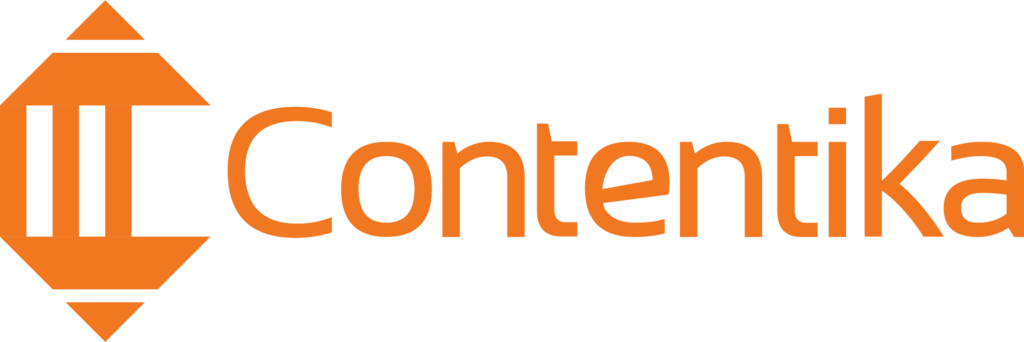Looking for the perfect marketing strategy to boost your business? A well-defined content marketing framework can help you reach your goals and maximize results.
In this blog post, we will discuss the importance of having a content marketing framework and its impact on sales funnels, the customer journey, and product costs. We will also explore different types of frameworks, such as the Segmentation, Targeting and Positioning (STP) Marketing Model or Digital Marketing Framework, and provide an overview of best practices for creating your unique framework.
Our expert advice and tips will equip you with the knowledge and tools to develop a successful marketing strategy that reaches new markets, increases sales, and earns you more money. By focusing on the right audience and creating engaging content, a content marketing framework can help you achieve your business objectives.
Keep reading to learn the best practices for creating a content marketing framework and discover how they can benefit your business.
What Is Content Marketing Framework?
A content marketing framework is a crucial part of any successful business strategy. It helps you create and implement strategies that are tailored towards your target audience in order to maximize the reach and engagement of your products or services.
A comprehensive content marketing framework combines various elements such as the STP Marketing Model, Digital Marketing, Content Strategy, and more. Additionally, it should also consider factors such as customer personas and their buying power; this allows for crafting content that meets their needs.
Furthermore, social channels should be taken into consideration for maximum impact. Finally, visualizing the customer journey through the process can help measure effectiveness against the goals set out in the overall business plan.
Benefits of a Content Marketing Framework
Content marketing is a critical part of any business’s success today. It’s a valuable asset that can make people more aware of your brand, bring in leads, increase customer loyalty and engagement, boost your search engine rankings, and drive sales.
But without a content marketing framework in place to guide your efforts, you may lack the direction needed to truly make an impact.
A well-crafted content marketing framework provides structure and discipline for developing effective content strategies. Here are some key benefits a comprehensive content marketing plan can provide:
Clarifies Your Goals and Objectives
A content marketing framework helps define specific goals and objectives for each stage of the buyer’s journey. By having clear objectives outlined upfront, you will be able to measure the effectiveness of your content strategy and adjust as needed.
In a survey of marketers, 70% of them reported setting marketing goals, and 47% of the marketers who set goals noted achieving marketing success most of the time.
Sets Clear Guidelines
A good content marketing framework gives you a road map for creating and delivering high-quality content that resonates with your target audience. It sets parameters for topics, keywords, tone, length, frequency, distribution channels, measures of engagement, and more.
Improves ROI
A well-crafted framework can help you get the most out of every effort by ensuring that each piece of content is created strategically and delivered with purpose. By understanding what types of content will be most effective in achieving specific goals, you’ll be able to maximize the return on investment (ROI).
Drives Consistency
A content marketing framework ensures that all of your content has a unified voice, look, and feel. This helps your audience get to know and trust your brand and makes it easier for them to recognize your content when it shows up on different channels.
Generates Quality Leads
By understanding the types of content that resonate best with your target audience at each stage of the buyer’s journey, you can create more effective lead-generation campaigns and get better-quality leads.
Enhances Team Productivity
A well-developed framework also streamlines workflows by providing clear direction on how tasks should be completed. This makes it possible for teams working together on content projects to work smarter, faster, and more efficiently.
Facilitates Measurement
A framework helps you track the performance of different pieces of content by setting specific KPIs that measure success. This data will help you identify which topics resonate best with your target audience, as well as what type of engagement each channel is driving.
With this valuable insight, you can adjust your approach as needed and optimize your efforts for maximum return.
Creating and maintaining an effective content marketing framework is essential for any business looking to succeed in today’s competitive landscape. By knowing what a comprehensive plan can do for you, you’ll be better able to make a difference with your content strategy and get your organization real results.
Top 5 Content Marketing Frameworks You Should Try
Content marketers need a clear plan for consistently making and delivering high-quality content if they want to engage potential customers and build strong relationships.
This is where having the right content marketing framework comes in: it provides structure and guidance to ensure that all aspects of your content marketing efforts are well-planned and flawlessly executed.
With so many different content marketing frameworks available, determining which one is best suited to your company’s needs can be difficult. Here are the top five content marketing frameworks you should definitely try to help you decide:
1. The Segmentation, Targeting, Positioning (STP) Marketing Model

The Segmentation, Targeting, Positioning (STP) marketing model is a tried and tested approach that businesses have been utilizing for years. It helps them to efficiently streamline their communications practices and ensure that the most valuable segments are chosen for the business.
This model can be helpful when creating marketing communication plans as it helps marketers prioritize propositions, develop and deliver personalized messages to engage different audiences.
The STP model consists of three steps: segmentation, targeting, and positioning. The segmentation step involves identifying a basis for the segmentation of target customers and determining important characteristics that differentiate each market segment.
The targeting step requires an evaluation of the potential commercial attractiveness of each segment and then developing a product positioning strategy for each selected one.
The positioning step is where marketers can tailor the marketing mix to their knowledge of each segment. This audience-focused approach helps ensure that more relevant messages are delivered to commercially appealing audiences.
This strategy and planning tool is featured in the RACE Growth System, which assists in creating a 90-day marketing plan across each stage of the marketing funnel.
By applying the STP model, businesses can be confident that they are targeting customers who have the potential to engage with them, convert, and ultimately become loyal customers. Utilizing this model helps companies maximize their resources while ensuring they receive maximum returns on their investments.
Additionally, it allows them to identify customer needs and demands better so they can communicate more efficiently with the right people to maximize their campaign success in a business environment. The STP model is an incredibly powerful tool that can be used to create successful marketing strategies, and businesses should consider giving it a try.
2. The TOFU-MOFU-BOFU Framework

The TOFU-MOFU-BOFU framework is one of the most widely used content marketing frameworks, and this framework focuses on providing a structure for driving leads through the sales funnel.
At the TOFU (top of the funnel) stage, you want to create content that educates and informs your audience without pitching a product. This is an opportunity to attract prospects who are still trying to understand what their problem is. Your content should be helpful and provide solutions for any questions they may have.
At the MOFU (middle of the funnel) stage, this is where you can start talking about your product or service as a potential solution for them. Content should continue to educate but also focus on why your company is the best choice for solving their issue. You can also offer gated content here to gather contact information from leads who are interested in what you’re offering.
Finally, at BOFU (the bottom of the funnel), you have a narrow audience of highly qualified leads who are ready to buy. This is the time to display your product and prove how it’s better than the competition by showcasing features, benefits, and how it solves their problem.
The TOFU-MOFU-BOFU framework is an essential content marketing framework for any business looking to reach its target audience and drive conversions. With this structure in place, you can nurture leads from awareness through consideration and ultimately conversion.
By understanding who your buyer persona is and tailoring each stage towards them, you can create content that guides them on their journey with your brand. Content should be relevant at every step of the process if you want it to be effective in driving leads and converting customers.
3. The Hedgehog Concept
The Hedgehog Concept is a business model that helps companies clearly define what sets them apart, drives their economic engine, and gives them the best chance of success. This concept involves creating a Venn diagram with three overlapping circles, one each for passion, strength, and economic viability.
The overlapping middle area of this diagram contains the company’s central vision and guiding principles. This core principle can help guide companies towards different strategies for long-term success.
To apply the Hedgehog Concept successfully in any business, it is important to identify the company’s passion first so as to create an inspiring mission statement that will motivate employees and customers alike.
After outlining your mission statement, you must then determine your organization’s strengths. This part of the process will help you identify what your company does best and how it is differentiated from its competitors.
Finally, you must hone in on what drives the economic engine of your organization – identifying the primary source that generates sales for the business.
After gathering information and organizing it in a Venn diagram, companies should review it with key stakeholders. This will help them understand their competitive advantage and make decisions about marketing, pricing, product development, and customer service.
4. Content Operation Framework
Content operations are crucial for long-term success in content marketing. It provides a framework to create, manage, measure, and optimize its effectiveness.
Creating a content plan with clear roles, responsibilities, and processes ensures everyone involved is aligned and on the same page. To execute an effective content operation framework, there are seven key steps to consider:
- Articulating the purpose of content: This is all about understanding why you’re doing it in the first place and what your mission and vision for your content marketing initiative are.
- Defining the content mission: Identify what you want your content to achieve, whether it’s brand awareness, sales enablement, or lead conversions.
- Monitoring core objectives and results: It’s essential to measure progress so that you can ensure that goals are being achieved.
- Building and organizing a team: Assign roles based on capacity levels. Ensure everyone knows their responsibilities within the project.
- Formalizing a hierarchy: Define who has the final say and who can approve content.
- Creating processes and workflows: Once roles are assigned, determine meeting times, bandwidths, and more based on the team’s capacity.
- Getting the right technology into the hands of those who need it: select tools that fit your needs and avoid overpaying for features you don’t require.
The content operation framework not only helps to plan content strategy but also gives structure and repeatability, which are essential for long-term success.
Following these seven steps will ensure that all elements of the content marketing process are working together cohesively, resulting in a much more effective outcome. This framework is necessary to achieve the desired goals of any organization’s content marketing efforts.
Conclusion
Content marketing is a powerful tool for any business, but it’s not something you can just jump into without the right framework. By understanding and utilizing the content marketing framework outlined in this post, businesses will be able to maximize their efforts and reach more customers than ever before.
With careful planning and execution, content marketing strategies can become a key part of any company’s overall success story. So what are you waiting for? Give your business the best chance at success by implementing a content marketing strategy today!
Remember, successful content isn’t just about creating high-quality pieces; an effective strategy relies on having an understanding of how all these pieces fit together. Start building your content marketing framework today and implement it as soon as possible to get the most out of your efforts.
CONTENT MARKETING PLAN TEMPLATE
Planning your content allows you to save time and resources in your content marketing efforts. Here is a simple template to follow when mapping out your short-term and long-term content marketing plans.
Download For Free










